
- •Quick Quiz 1 If a fly collides with the windshield of a fast-moving
- •Course of lectures
- •Work Done by a Constant Force
- •Figure 6.2 If an object undergoes a displacement ∆r under the action of
- •Work is a scalar quantity, and its units are force multiplied by length.
- •An important consideration for a system approach to problems is to note that
- •Work Done by a Varying Force
- •Figure 6.5 The work done by the component Fx of the varying force
- •Work Done by a Spring
- •Kinetic Energy and theWork–
- •One of the central features of the energy approach is the notion that
- •Power
- •In a manner similar to the way we approached the definition of velocity
- •In general, power is defined for any type of energy transfer. Therefore, the
- •Potential Energy of a System
- •The Isolated System–Conservation
- •Therefore, equating these two expressions for the work done on the book,
- •We define the sum of kinetic and potential energies as mechanical energy:
- •Conservative and
- •Conservative forces have these two equivalent properties:
- •Nonconservative Forces
- •Changes in Mechanical Energy
- •Relationship Between Conservative Forces
- •Relationship Between Conservative Forces
- •Quick Quiz 1 A block of mass m is projected across a horizontal

Quick Quiz 1 If a fly collides with the windshield of a fast-moving bus, which object experiences an impact force with a larger magnitude? (a) the fly (b) the bus (c) the same force is experienced by both.
Quick Quiz 2 In a free-body diagram for a single object, you draw (a) the forces acting on the object and the forces the object exerts on other objects, or
(b) only the forces acting on the object.
Quick Quiz 3 Which of the following is impossible for a car moving in a circular path? (a) the car has tangential acceleration but no centripetal acceleration. (b) the car has centripetal acceleration but no tangential acceleration. (c) the car has both centripetal acceleration and tangential acceleration.

Course of lectures
 «Contemporary
«Contemporary
Physics: Part1»
Lecture №4
Energy and Energy Transfer. 
Potential Energy.
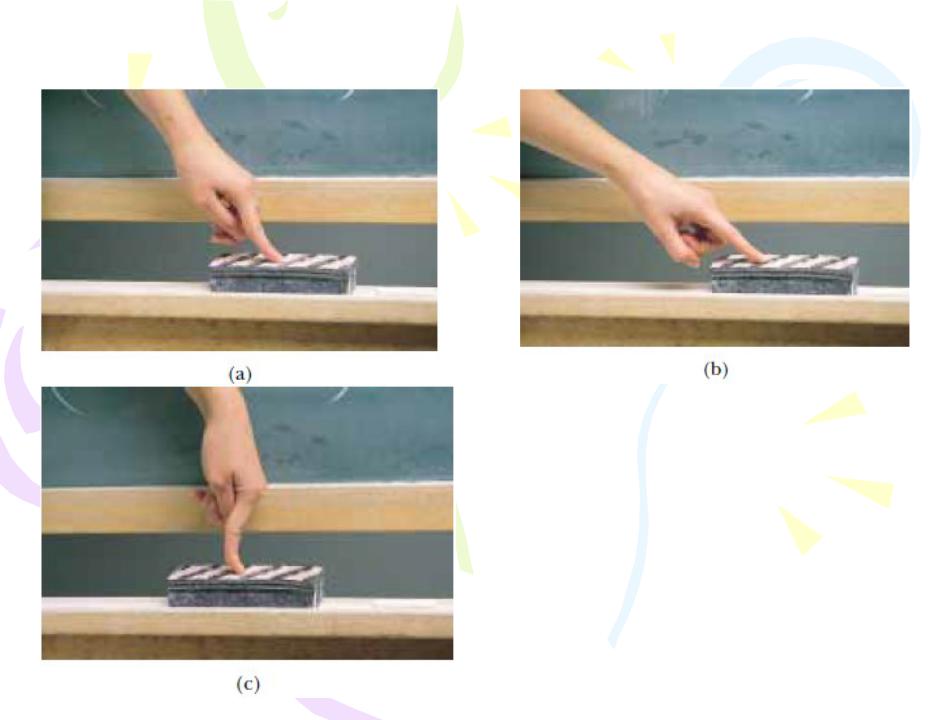
Work Done by a Constant Force
Figure 6.1 An eraser being pushed along a chalkboard tray.
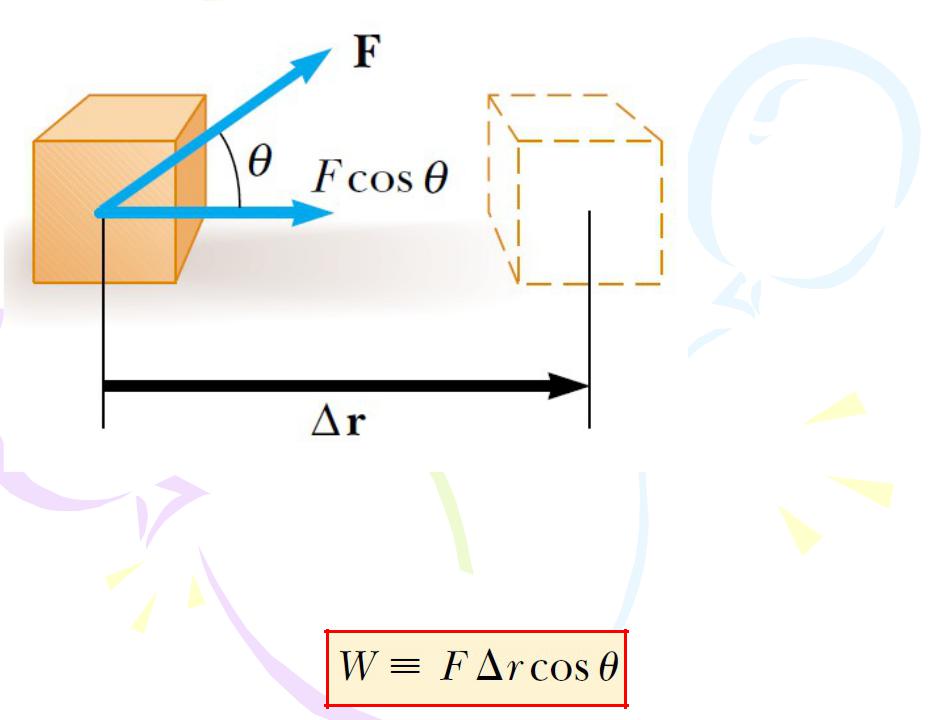
Figure 6.2 If an object undergoes a displacement ∆r under the action of a constant force F, the work done by the force is
F∆rcosθ.
The work W done on a system by an agent exerting a constant force on the system is the product of the magnitude F of the force, the magnitude ∆ r of the displacement of the point of application of the force, and cos θ, where θ is the angle between the force and
displacement vectors:
(6.1)
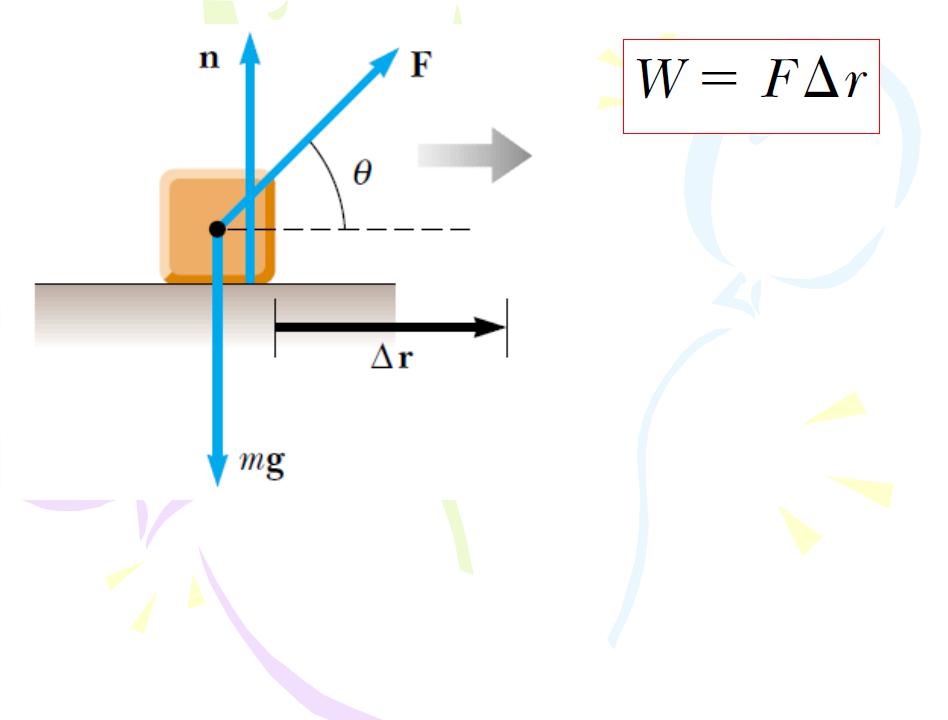
Work is a scalar quantity, and its units are force multiplied by length. Therefore, the SI unit of work is the newton· meter (N·m). This combination of units is used so frequently that it has been given a name of its own: the
joule ( J).
Figure 6.3 When an object is displaced on a frictionless, horizontal surface, the normal force n and the gravitational force mg do no work on the object. In the situation shown here, F is the only force doing work on the object.

An important consideration for a system approach to problems is to note that work is an energy transfer. If W is the work done on a system and W is positive, energy is transferred to the system; if W is negative, energy is transferred from the system. Thus, if a system interacts with its environment, this interaction can be described as a transfer of energy across the system boundary. This will result in a change in the energy stored in the system.
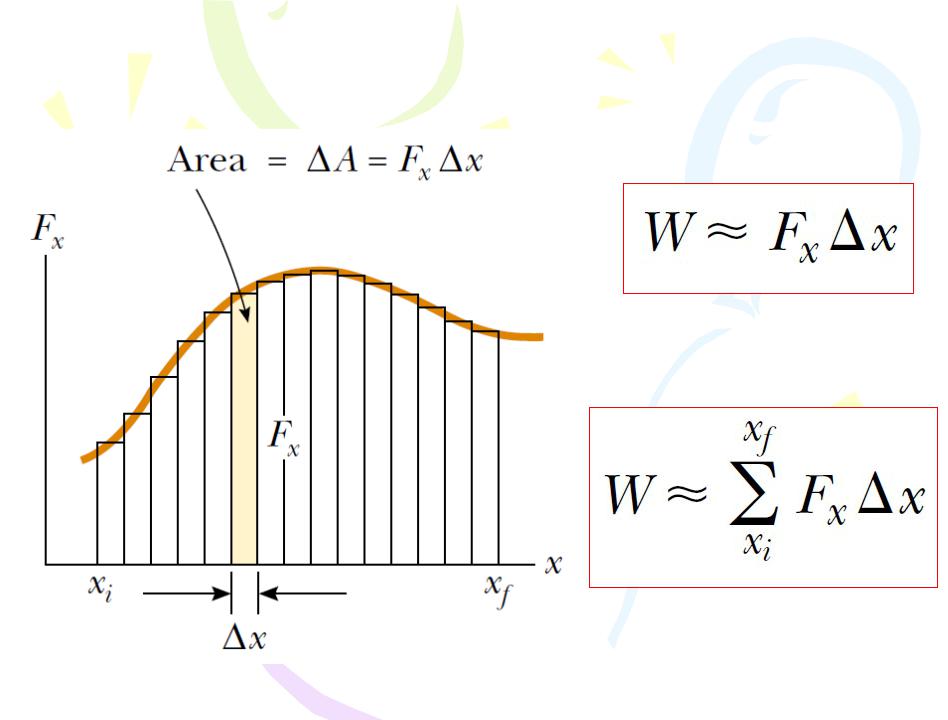
Work Done by a Varying Force
Figure 6.4 The work done by the force
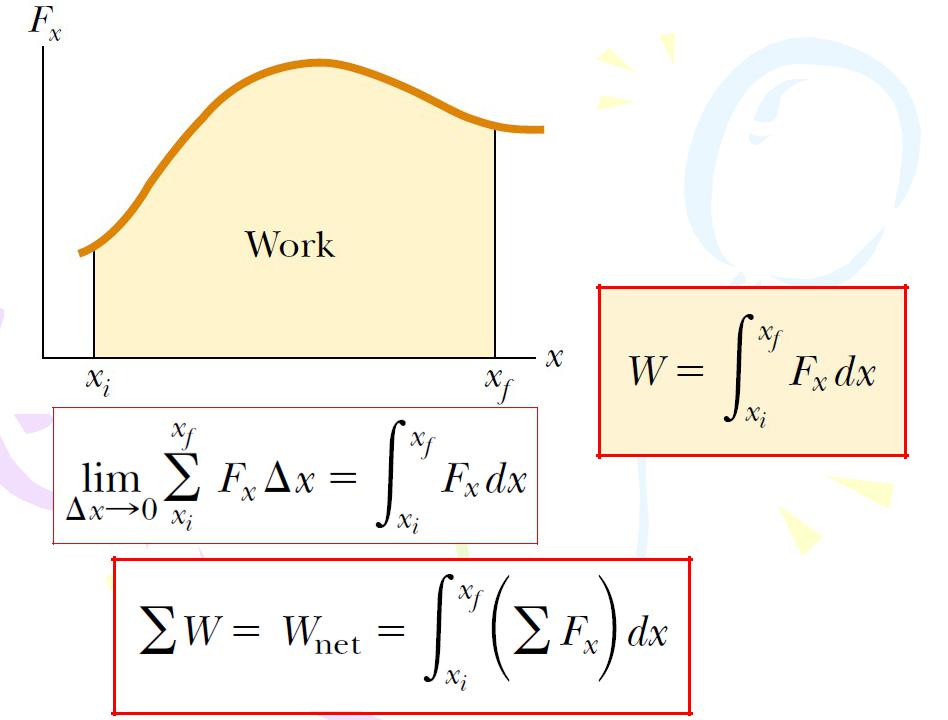
Figure 6.5 The work done by the component Fx of the varying force as
the particle moves from xi to xf is exactly equal to the area under this curve.
(6.2)
(6.3)

Work Done by a Spring
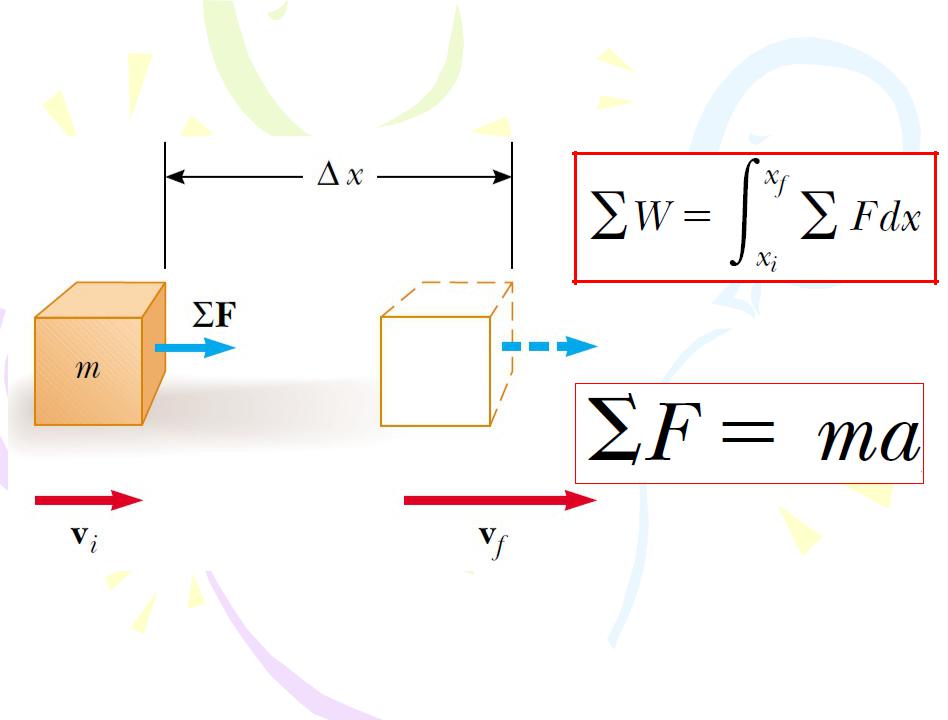
Kinetic Energy and the Work–
Work–
Kinetic Energy Theorem
(6.4)
Figure 6.6 An object undergoing a displacement ∆r=∆xˆi and a change in velocity under the action of a constant net force ƩF.
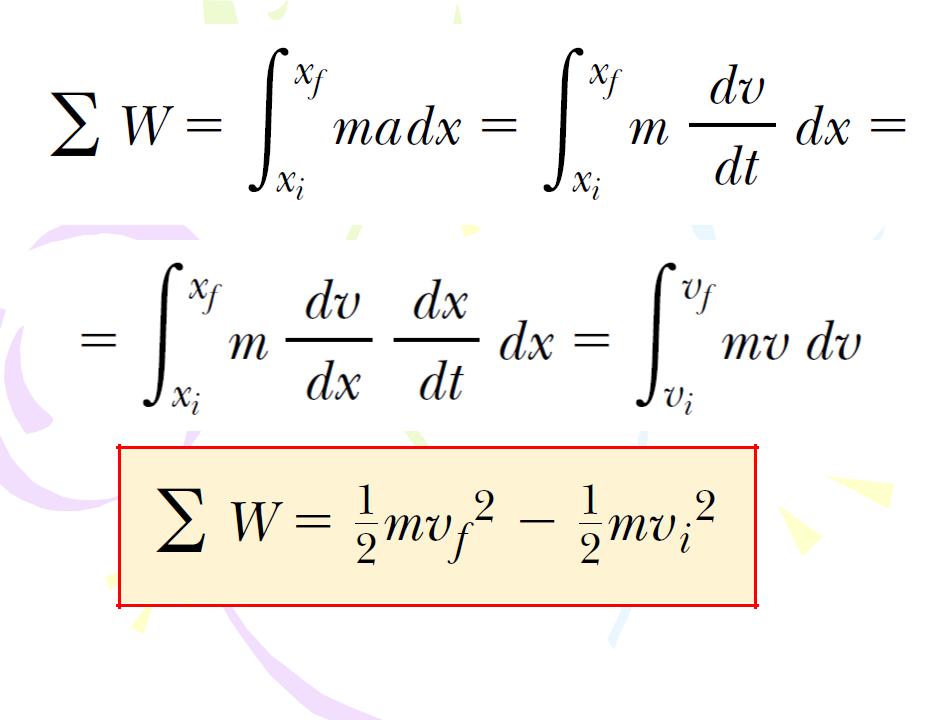
(6.5)
where vi is the speed of the block when it is at x = xi and vf is its speed at xf.
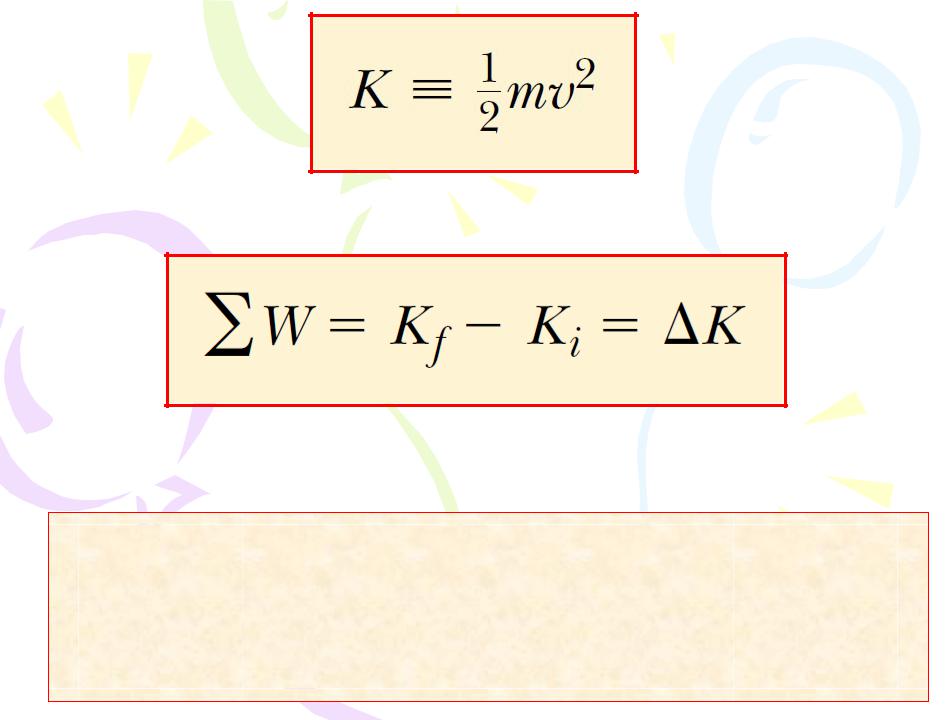
(6.6)
Kinetic energy is a scalar quantity and has the same units as work.
(6.7)
Equation 6.7 is an important result known as the work–kinetic energy theorem:
In the case in which work is done on a system and the only change in the system is in its speed, the work done by the net force equals the change in kinetic energy of the system.

(a) |
(c) |
|
(b)
Figure 6.7 Energy transfer mechanisms. (a) Energy is transferred to the block by work; (b) energy leaves the radio from the speaker by mechanical waves; (c) energy transfers up the handle of the spoon by heat.
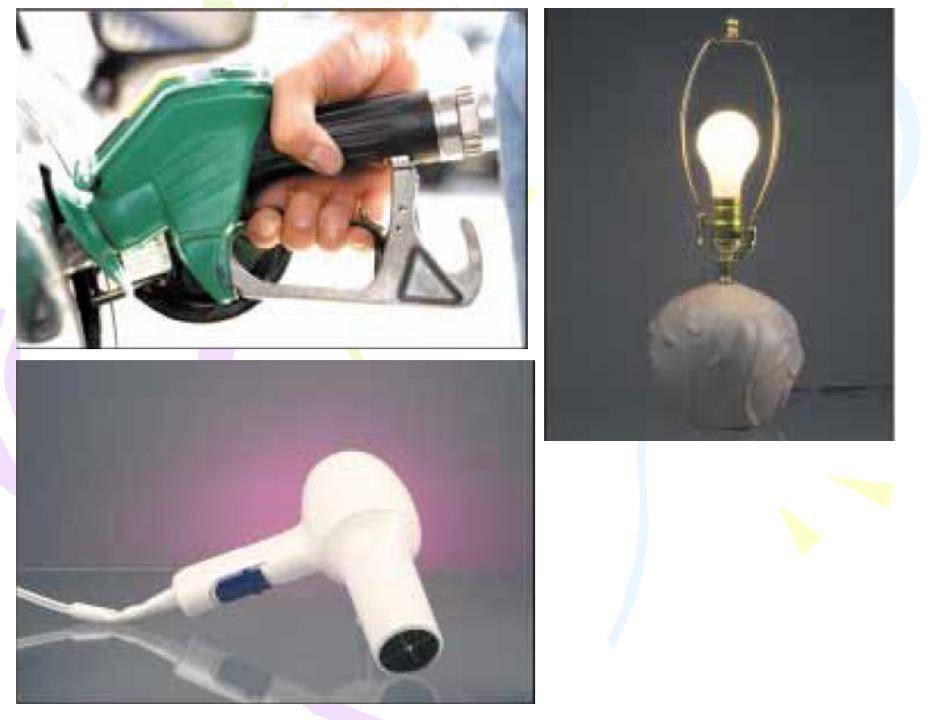
(d) |
(f) |
|
(e)
Figure 6.7 Energy transfer mechanisms. (d) energy enters the automobile gas tank by matter transfer; (e) energy enters the hair dryer by electrical transmission; and (f) energy leaves the light bulb by electromagnetic radiation.
